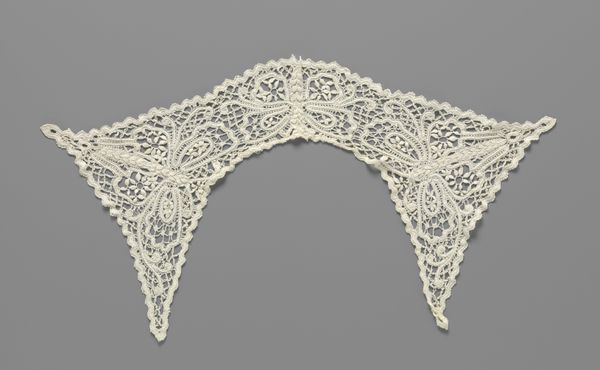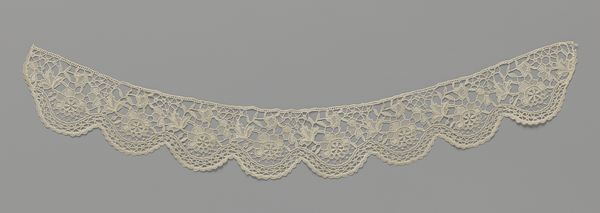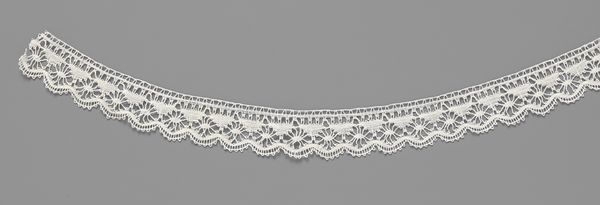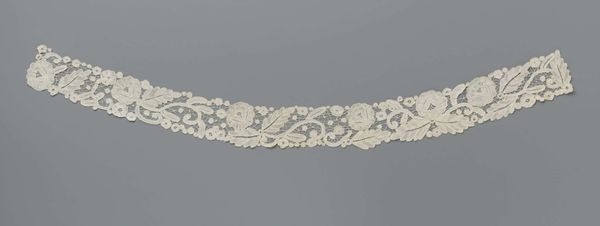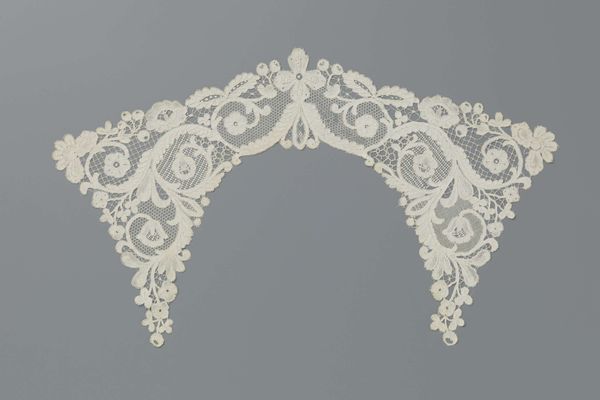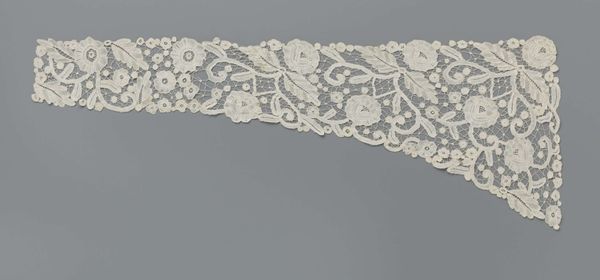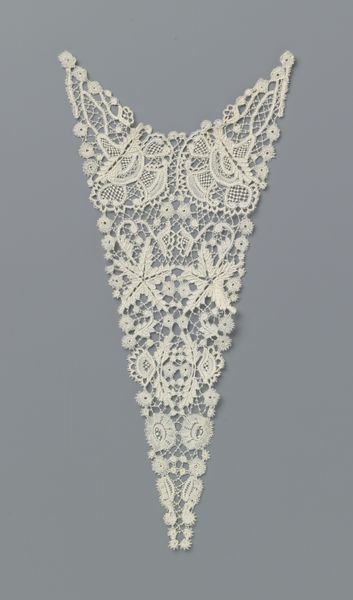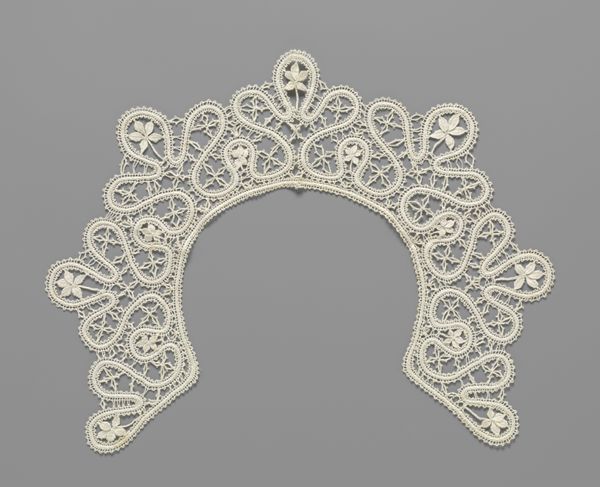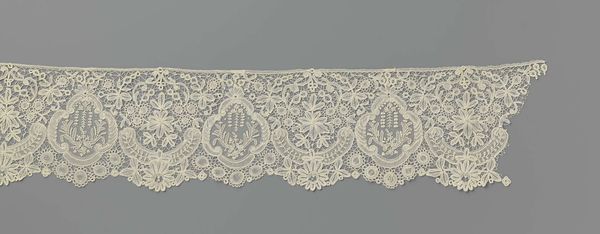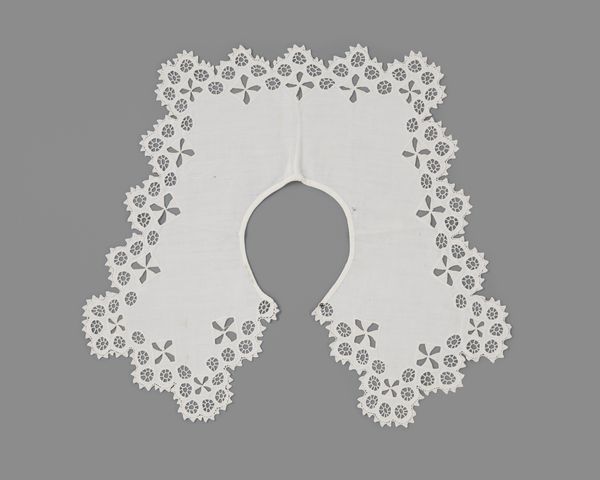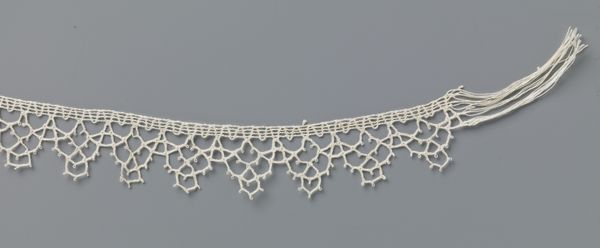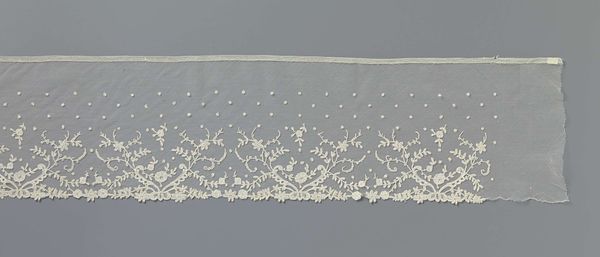
fibre-art, weaving, textile
#
natural stone pattern
#
fibre-art
#
arts-&-crafts-movement
#
weaving
#
textile
#
pattern design
#
repetitive shape and pattern
#
fabric design
#
repetition of pattern
#
regular pattern
#
pattern repetition
#
decorative-art
#
imprinted textile
#
layered pattern
#
combined pattern
Dimensions: width 9.5 cm, height 41 cm, width 55 cm
Copyright: Rijks Museum: Open Domain
Curator: Looking at this piece, I'm struck by its delicate intricacy. Editor: It feels both timeless and fragile, like a whisper from another era. Curator: This is a bobbin lace collar dating to around 1907, showcasing a design of fleur-de-lys nestled amongst long tendrils. The artist, Léon Sacré, demonstrates impressive skill in fibre-art. Editor: Fibre-art…It makes me think about the lives of the women who likely produced such intricate pieces. Beyond aesthetic appeal, lace carries socio-economic implications: its production historically empowered some women while simultaneously confining them within certain labor roles. What does its creation, its very materiality, tell us? Curator: Precisely! The production of bobbin lace was extremely labor-intensive. We must remember that the materials themselves have a history too; the threads, bobbins, the very tools used carry cultural information about skill sharing and tradition. Editor: The fleur-de-lys, a symbol of French royalty, speaks volumes too. Its inclusion suggests a connection to power, privilege, and a specific cultural narrative, especially considering that it appears alongside these very 'organic' vines. It represents power tamed through nature or nature appropriated for powerful display. Curator: Or maybe there's a contrast meant to bring royalty down to earth. This was made during the arts-and-crafts movement which emphasized functionality, celebrating honest materials, construction, and a return to handmade goods in defiance of industrialization. What do you see in these contrasting aims and construction techniques? Editor: It certainly positions us to re-evaluate this ornamental craft as fine art. And thinking more of context, this ornamental function makes me wonder how such luxury items are understood within contemporary debates about sustainability, labor practices, and consumption. Is this level of painstaking craft still ethical? Curator: Good questions. As tastes shift, and fashions change, what becomes art versus commodity changes. Its placement in a museum invites deeper exploration into the complex networks of design, labor, and value. Editor: Absolutely. Reflecting on its layered meanings allows us to contemplate the artwork’s relevance beyond its original creation. Curator: It really compels one to appreciate how embedded meaning is within the everyday.
Comments
No comments
Be the first to comment and join the conversation on the ultimate creative platform.
